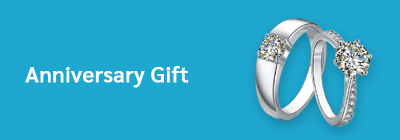
No matter how often you and I spend our evenings in high-end restaurants, everytime the mood is sided with wine, the world-class serving by waitstaff draws a charisma that’s just hard to escape, right? From the moment they help us pick the ideal wine for our taste and entrée, to the careful selection of best-suited glassware, they thoroughougly enchant with their graceful wine service etiquette.
But what can be said is that this minutely detailed etiquette not only upholds professionalism and presentation but also enhances the satisfaction of both the host and the guests by improving the wine’s taste and preserving its quality soon after it is opened.
This is why, whether the setting is formal, such as a restaurant, or laid-back, like solo-sipping, a picnic, or a home celebration like Housewarming, a wine lover like you should know how to serve wine. So, to don the mantle of a fine dining pro, head to this article of ours that comprehensively showcases how do you serve wine step by step, rendering a masterclass to turn any customer into a regular and win the hearts of friends, family, and colleagues as guests.
Step 1. Begin With The Right Wine Selection
When serving wine, always consider the wine selection carefully, as everything that follows aims to enhance the overall drinking experience. It's crucial to ensure that the chosen bottle of wine aligns with the guest's expectations. Here are some suggestions for choosing the right wine for different scenarios:
-
Occasions: Different wines have the charm to fit specific occasions. For instance, a bold red wine is the perfect companion for a formal dinner or chilly holidays, while a crisp white wine is more suited for a laid-back brunch or a sun-basked picnic.
-
Taste Preferences:Understanding your guests’ taste preferences is the key to making the right wine selection. Don’t hesitate to dig into the details of whether they prefer fine red wines, whites, refreshing rosés, or effervescent-rich sparklings like Champagne, Prosecco or Cava. If you are in the wine and hospitality business, it’s always a good practice to have different types of wine on hand to serve wine to different tastes of customers.
-
Food Pairing:Consider the dishes that will accompany the chosen wine, as the flavors of both should complement each other. For instance, robust red wines like Cabernet and Shiraz pair well with red meats, while delicate wines like Sauvignon Blanc and Chardonnay pair best with seafood. Brut Champagnes and Proseccos are versatile and can appeal to a broader range of palates.
Step 2. Perform a Quick Temperature Check
After you have selected the wine, it's time to take it on an icy ride. Whether your wine service is casual or formal, wine should not be served at room temperature and must be chilled to bring out its best qualities—preserving its aromas and flavors, boosting its freshness, slowing down oxidation when opened, and making it more enjoyable to sip and pair with food.
Chilling wine also contributes to a well-balanced taste. Serving red wines warmly can mask their subtleties and result in excessive alcohol perception. Serving whites above the white wine temperature can hide their complexity and subtlety. Serving champagne at an ideal temperature benefits them, enhancing their effervescence, freshness, and acidity and avoiding cork getting stuck by calming their pressure buildup inside.
Depending on various types of wine, here's a table to answer what temperature should be served at:
|
Wine |
Serving Temperature |
|
|---|---|---|
|
Red Wines |
Light-Bodied Reds (e.g., Pinot Noir, Gamay) |
55-60°F (12-16°C) |
|
Medium-Bodied Reds (e.g., Merlot, Sangiovese) |
60-65°F (16-18°C) |
|
|
Full-Bodied Wines (e.g., Cabernet Sauvignon, Syrah) |
60-65°F (16-18°C) |
|
|
White Wines |
Light-Bodied Whites (e.g., Sauvignon Blanc, Pinot Grigio ) |
50-55°F (10-13°C) |
|
Medium-Bodied Whites (e.g., Chardonnay, Chenin Blanc) |
55-60°F (12-16°C) |
|
|
Full-Bodied Wines (e.g., Oaked Chardonnay, Sémillon) |
60-65°F (16-18°C) |
|
|
Fortified Wines |
Vintage Port, Sherry, Madeira |
57-60°F (14-16°C) |
|
Champagne |
45-48°F (7-9°C) |
|
|
50-55°F (10-13°C) |
||
|
Prosecco |
40-45°F (4-7°C) |
|
|
Cava |
46-50°F (8-10°C) |
|
|
Other Sparkling Wines |
45-50°F (7-10°C) |
|
|
Rosés |
48–53°F (9-12°C) |
|
The most reliable way to chill a wine bottle is to use these methods: a wine cooler, an ice bucket, or a wine chiller sleeve. While there is a general rule to serve wine chilled, be cautious not to over-chill, as excessively cold temperatures can mute the taste or even freeze wine. To ensure precision, it’s advisable to have a wine thermometer on hand.
Step 3. Present Your Wine Like a Majesty
After your chilled wine bottle has left droplets in its wake, present it to your guests. This act of presenting the wine is an elegant and exciting part of the wine service. It evokes a sense of anticipation and appreciation for the wine they are about to enjoy, demonstrating your respect for the wine itself and for your guests’ preferences, especially in formal dine-in settings.
When presenting a wine bottle, make sure the label is visible. Holding the bottle with the label upfront makes it easy to locate background information about the wine, such as the producer, vintage, style and alcohol by volume (ABV).
In formal settings, this practice allows guests to inspect their order, fostering transparency and trust between both parties. In more relaxed settings like home get-togethers, it provides an opportunity to showcase your wacky wine selection and initiate engaging conversations about it with everyone present.
Step 4. Pick The Ideal Glasses For Your Chosen Wine
Now, it’s time to select an ideal pair of wine glasses to enhance the experience. While it may seem like a minor detail, choosing the right glasses is essential for enhancing your wine service and showcasing your commitment to providing the best possible wine experience for your guests.
In terms of material, we highly recommend delicate yet exquisite crystal glasses. Rest, each wine varietal demands a specific glass in terms of its shape, size and capacity, allowing its rush to shine through aesthetically and in terms of aromas, flavors, effervescence and temperature control.
Here’s a quick checklist of glasses for various types of wine:
-
Red Wine Glasses: For reds, opt for large crystal wine glasses with thin, delicate rims and wide, round bowls. Meant to be served around 5 ounces (150 ml), red wine glasses provide ample space for the wine to breathe, opening up its complex aromas and flavors.
-
White Wine Glasses: In contrast to reds, serve whites in smaller crystal glasses with narrower U-shaped bowls. White wine glasses typically serve 5 ounces (150 ml), and their elegant design helps the wine maintain its temperature while being sipped toward the front and sides of the palate, enhancing the perception of its acidity and freshness.
-
Sparkling Wine Glasses: Sparkling wines like champagne, prosecco, and cava are best served in flutes, which have a tall, narrow design that preserve the bubbles, allowing them to rise in a steady stream. A standard bottle of champagne typically yields 6 glasses when served in 4-ounce portions, and the flute’s shape enhances the aromas, making the sipping an even more enjoyable experience.
-
Fortified Wine Glasses: Fortified wines like Vintage Port, Sherry, and Madeira have more alcohol content as compared to still and sparkling wines, which is why they are best served in glasses with short stems and small bowls. The narrow, short opening dims the alcohol while emphasizing the sweetness and subtle nuances on the nose and palate, usually holding 2 to 3 ounces (60-90 ml).
-
Rosé Wine Glasses: With a spectrum of personalities, rose wine is best served in stemmed wine glasses. If you are serving a mature, full-bodied one, opt for glasses with a slightly tapered bowl, and for a younger, crisper, and sweeter rose, opt for glasses with a flared lip.
Step 5. Gently Open The Wine Bottle
Once all the preparations are made, it’s time to open the bottle to serve wine. Remember not to rush, and handle the bottle gently. This not only demonstrates your skill but also ensures that the wine inside remains intact and ready to be enjoyed. It is always recommended to use a side table or gueridon to avoid any mishaps or spillage, whether in formal or casual settings.
Start by selecting a suitable corkscrew, whether it’s a traditional or modern one. Choose the one you find most comfortable to use. Also, have a service cloth or, in a relaxed setting, a clean cloth, towel, or napkin on hand to wipe the bottle’s top while it drips, maintaining cleanliness during service. Once you have these essentials, you are good to go.
-
To open a still or semi-still wine bottle, begin by picking one of the foil cutters or a corkscrew for cutting the foil capsule from the top. Once the foil is removed and the cork is exposed, with a steady hand, apply even, gentle pressure to insert the corkscrew into the center of the cork. Twist it slowly, allowing it to work its way into the cork without forcing it. When the corkscrew is fully inserted, carefully pull out the cork. It's essential to keep the bottle steady during this process to prevent any wine from splashing or spilling.
-
If you're opening a bottle of champagne or another sparkling wine, remember that the approach is slightly different. Instead of pulling the cork, twist the bottle while holding the cork firmly, allowing the cork to release with a satisfying “pop”. This method preserves the wine's effervescence.
Step 6. Decant To De-Code Wine’s Layered Charm
After opening the wine, uplevel the glassware game with a wine decanter. Whether made of glass or crystal, or crafted in the standard or chic swan, sail, or bell-like design, it will infuse a touch of drama and ceremony into wine service.
When wine is poured and swirled into a decanter, it achieves optimal interaction with the air, allowing it to “breathe” by absorbing oxygen and softening. This process further evolves the wine by unveiling its hidden aromas and flavors. While not necessary for all wines, decanting can significantly enhance the experience, especially for young and older red wine vintages.
For young wines that are decanted, aeration softens harsh tannins and mellows any aggressive or closed-off aromas and flavors. In the case of older red wine vintages, decanting must be done cautiously, as they are delicate and sensitive to over-aeration. When decanted with care, these wines benefit from revealing their masked, complex aromas and flavors while also making it easy to separate any sediment present. Although sediment is not harmful to consume, it could alter the wine’s taste and aroma.
Here’s a quick checklist on how to serve wine with perfect decanting:
|
Wine |
Decanting Time |
|---|---|
|
Light Red Wines |
20-30 minutes |
|
Medium-Bodied Red Wines |
30-60 minutes |
|
Full-Bodied Red Wines |
60 minutes or more |
|
White Wines |
Don’t need to be decanted. |
|
Rosés |
Don’t need to be decanted. |
|
Sparkling Wines |
Don’t decant, Save those Fine Streaming Bubbles |
Step 7. Serve Wine Like a Pro
Now, it’s time for the magic—it's time to stir the setting with the magnificent rush of wine. As you prepare to serve wine, remember to maintain a balance of attentiveness, precision, and grace. Serving wine is not just a mere act of pouring; it’s an opportunity to pay attention to every detail, amplifying the aura of sophistication and enjoyment
When serving, exercise caution and pour the wine directly from the wine decanter, ensuring there is a gap between the rim of the glass and the decanter’s opening, avoiding any spillage or splashing. In a restaurant setting, you can also explain the aeration process to your guests and adhere to traditional etiquette by serving women first, followed by men, and finally the host.
But How To Serve Wine If It’s Not Decanted?
If the selected wine is not decanted, it has to be served in a different fashion. Here’s how:
When serving, pour the wine gently from the bottle, ensuring it doesn’t touch the rim of the glass. Dispense it in modest quantities, filling the glass about one-third full. This allows your guests to not feel overwhelmed, sip in moderation, and also allows the wine to swirl and breathe.
As the meal progresses, keep an eye on your guests’ glasses and discreetly offer refills at a comfortable pace. If your guests choose to drink champagne or another sparkling wine, after pouring, place it back in the ice bucket on the side table or gueridon.
In a restaurant setting, in addition to this wine-pouring etiquette, it is customary to first serve the wine to the host. This is done to get their approval on the wine’s quality and make sure that the wine has not gone bad due to over-aging, cork taint or improper storage. After approval, pour traditionally for the women first, then the men, and finally the host.
Step 8. Enhance The Sipping With Wine & Food Pairing
Each second spent sipping wine is a captivating experience, filled with enchanting flavors, aromas, textures and finishes that appeal to the senses and evoke the nostalgia of its terroir. This culinary journey can become even more appetizing when paired with food, creating a harmonious dining experience where wine and dishes complement each other.
In a formal setting, it’s best to respect the guests’ personal adventure with wine and food pairing and serve the ordered dish right after the wine is poured. However, when hosting a get-together, it’s crucial to make a judgment on which food will best complement the chosen wine, creating a combination that offers a memorable culinary experience for everyone to cherish.

The first rule of wine and food pairing is to consider the intensity and flavors of the dish. Lighter wines such as Pinot Noir, Chardonnay, or Sauvignon Blanc pair beautifully with lighter fare like seafood, salads and white meats. On the other hand, heartier, full-bodied wines like Cabernet Sauvignon or Shiraz are perfect partners for grilled steaks, stews and red meats.
In addition to complementary flavors, contrasting flavors can also create exciting pairings. A slightly sweet Riesling or a brut champagne can balance the heat of spicy Thai cuisine, creating a harmonious blend of flavors on the palate. Meanwhile, proseccos are versatile in food pairings and go well with a range of dishes, from seafood to appetizers.
Ultimately, wine and food pairing is a personal quest, and there are no strict rules. It's about exploring and finding combinations that delight your palate. Experiment, savor and appreciate the intricate interplay of flavors, textures, and aromas that wine and food pairing offer.
Step 9. Store Properly, In The Case Of Leftover Wine
After all the sipping and savoring is done, it’s quite common to have an unfinished bottle of wine. In upscale dining settings, the server may recork the bottle and label it for your table, allowing you to take the leftover wine home or enjoy it on your next visit. However, in relaxed settings, it’s up to you to preserve your unfinished vino. In such cases, it’s always recommended to store an open bottle of wine properly to prevent it from going bad prematurely.
Wine is a delicate drink, and when left open for an extended period, it comes into contact with air for too long, leading to over-oxidation that can dull its taste and aromas, ultimately diminishing the overall drinking experience. If gone bad, wine tastes vinegar-like harsh or simply muted on the senses.
Therefore, it is essential to store opened wine properly. Start by first recorking it or resealing it with the help of a wine stopper, a wine vacuum pump, or simply blocking the bottle opening with wax paper. Later, place the bottle upright in a cool, dark place.
For still wines, opened reds typically last for 3-5 days, while whites endure for around 2–3 days, as they are slightly more delicate. Sparkling wines like champagne go bad even with a shorter shelf life, usually 1-2 days, due to the rapid loss of carbonation, resulting in off-putting flatness. So, be sure to store your remaining elixir and try to finish it as soon as possible.
Final Thoughts On How To Serve Wine
Be it visits to upscale settings or engaging in an intimate gathering with family or friends, mastering the art of how to serve wine is the key to elevating any moment that is planned to be dipped in the finesse of fine wines. From picking up the right wine bottle to serving it with ideal glassware and top-offs to appetizing food pairings, it's a culinary journey of sophistication.
We hope this blog post has helped you in understanding “how should wine be served”, boosting confidence in professional or personal errands. For additional assistance, browse our collection of wines, champagnes and proseccos, each complemented by scrumptious chocolate gift baskets, cheese gift baskets, and more for memorable food pairings. The best part is that each comes with quirky customisation options and seamless delivery across the USA.
✨Cheers to the world of wine and creating memorable moments ✨
FAQs On How To Serve Wine:
-
What Equipment Do You Need to Serve Wine?
To serve wine correctly, it is recommended to opt for glasses, a corkscrew, a wine decanter (optional), and a wine cooler or refrigerator to store wine at the right temperature.
-
How Do You Serve Wine Cold Or Warm?
Wine is not meant to be served at room temperature and should be chilled before serving, as it boosts freshness by enhancing flavors and aromas, with white wines being served chilled and red wines somewhat warmer.
-
Does Wine Go Bad When It Is Not Served Fully?
Yes, wine can deteriorate if not stored properly. In case you have leftover vino after serving, make sure to re-cork wine or reseal wine by using plastic wrap, a rubber stopper, or wax paper.
How To Serve Wine At Home?
When you plan to serve wine at home, make sure you choose wine and food as per the tone of the occasion or guests’ taste preferences and serve the wine at the right temperature and in the best-suited glasses.
-
How To Serve a Bottle Of Wine At a Restaurant?
At a restaurant, the tone of the wine service must be professional, and the guests must be served the wine and food pairing in accordance with their preferences. Rest, stay cautious when you open, decant (if required), and pour the wine in the appropriate glasses.
-
How Do You Serve Wine For Beginners?
For beginners, the wine service etiquette must be the same but the wine selection must be tailored in accordance to their level of familiarity. Choose approachable whites or reds and serve in easy to handle universal wine glasses.
-
How To Serve Red Wine?
Serve red wines at a temperature of 55–65°F (13–18°C) in large crystal glasses with thin, delicate rims and wide, round bowls. Allow it to aerate and open up its flavors and aromas before serving.
-
How To Serve Cabernet?
To serve cabernet, present it at 60–65°F in large wine glasses, potentially decanting and pairing it with rich, hearty dishes like steak or lamb for a delightful sipping. If not finished, store leftover cabernet upright in a cool, dark place.
-
How To Serve White Wine?
Serve white wine at a temperature of 45–55°F (7–13°C) in smaller crystal glasses with narrower U-shaped bowls. Allow it to aerate briefly to open up its delicate flavors and aromas before serving.
-
How To Serve Sparkling Wine?
Serve sparkling wine at a temperature of 40–45°F (4–7°C) in a flute- or tulip-shaped glass around ¾ to retain its bubbles, control temperature, and enhance the overall drinking experience.








Leave a Comment